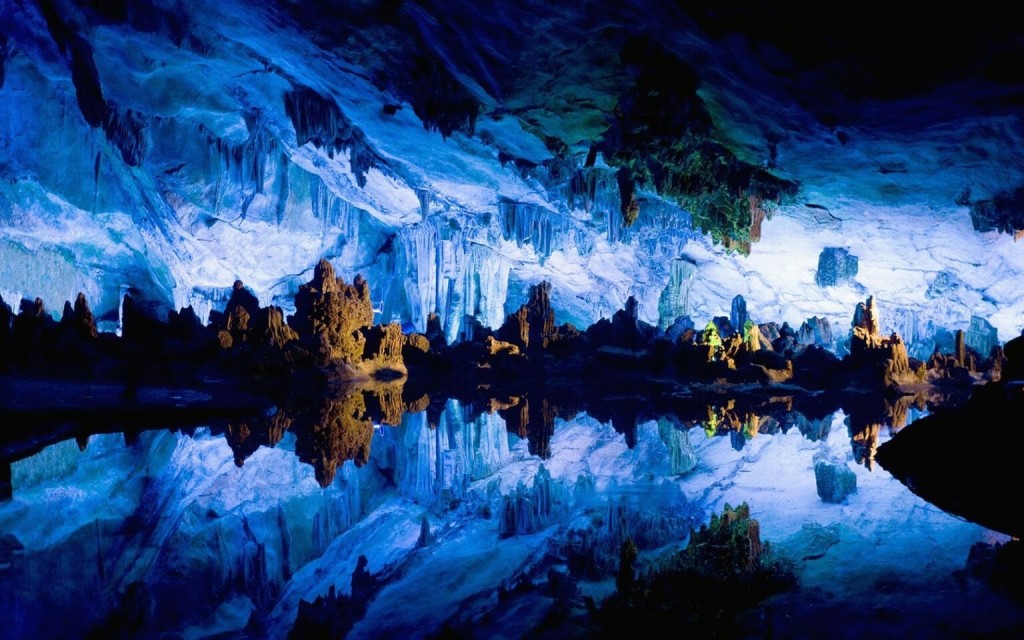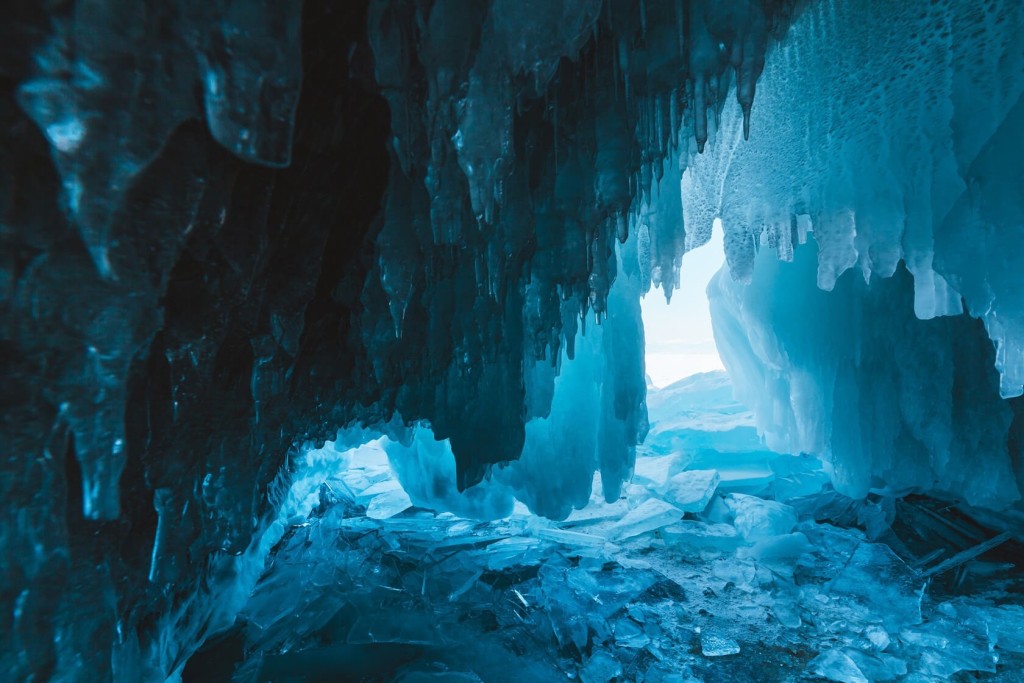February 10, 2023
Wonders of Russia: Kungur ice cave
Friends, we continue to introduce you to the natural wonders of Russia. we continue to introduce you to the natural wonders of Russia. Today we are going to Perm Krai, to the right bank of the Sylva River. Here, at the base of the Ice Mountain, there is one of the largest karst caves in Russia – the Kungur Ice Cave. The length of its intricate corridors according to the latest data (2021) is 8,153 km – this is the seventh place among all karst caves in the world! True, only 1.7 km is open to the public, but this is quite enough to enjoy the contemplation of the underground beauties. The cave has 58 grottoes, 70 underwater lakes with the purest ice water and 146 organ pipes - vertical shafts reaching almost to the surface.
The most extensive grottoes are the Geographers' Grotto (50,000 m3) and the Giant (45,000 m3). The width of these underground halls is more than 40 m, the ceiling height is up to 10 m. There are smaller grottoes in the Kungur cave, with interesting "filling" and poetic names. So, in the Diamond Grotto, thanks to the year-round subzero temperature, the walls are decorated with beautiful frosty patterns that shimmer in artificial light like precious stones. In the Meteor Grotto, because of the illumination, it seems that a glowing meteorite is flying under the ceiling. In the Ethereal grotto there is the highest organ pipe - 22 m in height. In the Polar Grotto, you can see an ice column similar to a frozen waterfall, in the Ruins of Pompeii grotto – sculptures of a crocodile and a turtle created by nature, in the Sculptural One – a stone frog Princess.

The largest lake is a large underground one. Its surface area is 1,460 m2, its depth is up to 5 m. The water temperature in the lakes is not much higher than 0 ° all year round (in a large underground lake - 5-5.7 ° C), so there are few living organisms in it. In addition to bacteria, these are crustaceans, Crangonyx Khlebnikov (Crangonyx chlebnikovi), which are endemic, and small frogs. Sometimes during high water, fish and small crustaceans get into underground lakes, but there is almost nothing to eat there, so the fauna of the Kungur cave has not changed significantly for many centuries.
By the way, scientists estimate the age of the cave at 10-12 thousand years. It got its name for the ice cover, which can be seen all year round on the floor, walls and ceilings of its grottoes. Long-term ice covers the floor of the Diamond, Polar, Dante, and Cross grottoes. In some places, the thickness of the layer reaches 2 m. The area of distribution of perennial ice is about 500 m2, and their volume is 350 m3. They arose mainly during periods of intense warming, when water seeped through cracks from above, and in recent years they have been replenished by falling ice crystals.

The first written mention of the Kungur ice cave dates back to the XVIII century, although it is believed that as early as 1578 Ermak and his army stayed there, and later the Old Believers hid. An ancient cross, an icon and a small tomb were found in one of the grottoes. Thanks to these finds, the grotto was named the Cross. The cave became a tourist attraction at the beginning of the XX century, thanks to Alexander Timofeevich Khlebnikov. In 1914, he rented a cave for 12 years for 300 rubles and became the first local guide. Nowadays, about 100,000 tourists come to admire its icy beauty every year.
The most extensive grottoes are the Geographers' Grotto (50,000 m3) and the Giant (45,000 m3). The width of these underground halls is more than 40 m, the ceiling height is up to 10 m. There are smaller grottoes in the Kungur cave, with interesting "filling" and poetic names. So, in the Diamond Grotto, thanks to the year-round subzero temperature, the walls are decorated with beautiful frosty patterns that shimmer in artificial light like precious stones. In the Meteor Grotto, because of the illumination, it seems that a glowing meteorite is flying under the ceiling. In the Ethereal grotto there is the highest organ pipe - 22 m in height. In the Polar Grotto, you can see an ice column similar to a frozen waterfall, in the Ruins of Pompeii grotto – sculptures of a crocodile and a turtle created by nature, in the Sculptural One – a stone frog Princess.
The largest lake is a large underground one. Its surface area is 1,460 m2, its depth is up to 5 m. The water temperature in the lakes is not much higher than 0 ° all year round (in a large underground lake - 5-5.7 ° C), so there are few living organisms in it. In addition to bacteria, these are crustaceans, Crangonyx Khlebnikov (Crangonyx chlebnikovi), which are endemic, and small frogs. Sometimes during high water, fish and small crustaceans get into underground lakes, but there is almost nothing to eat there, so the fauna of the Kungur cave has not changed significantly for many centuries.
By the way, scientists estimate the age of the cave at 10-12 thousand years. It got its name for the ice cover, which can be seen all year round on the floor, walls and ceilings of its grottoes. Long-term ice covers the floor of the Diamond, Polar, Dante, and Cross grottoes. In some places, the thickness of the layer reaches 2 m. The area of distribution of perennial ice is about 500 m2, and their volume is 350 m3. They arose mainly during periods of intense warming, when water seeped through cracks from above, and in recent years they have been replenished by falling ice crystals.
The first written mention of the Kungur ice cave dates back to the XVIII century, although it is believed that as early as 1578 Ermak and his army stayed there, and later the Old Believers hid. An ancient cross, an icon and a small tomb were found in one of the grottoes. Thanks to these finds, the grotto was named the Cross. The cave became a tourist attraction at the beginning of the XX century, thanks to Alexander Timofeevich Khlebnikov. In 1914, he rented a cave for 12 years for 300 rubles and became the first local guide. Nowadays, about 100,000 tourists come to admire its icy beauty every year.
Read more
July 31, 2024
April 12, 2024
April 5, 2024